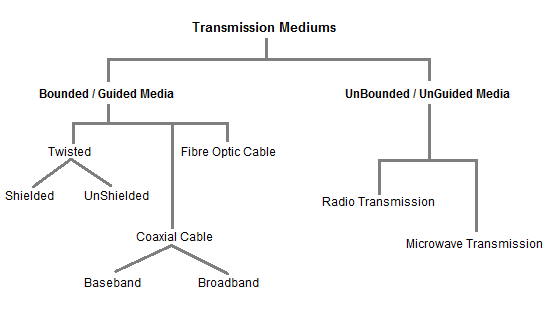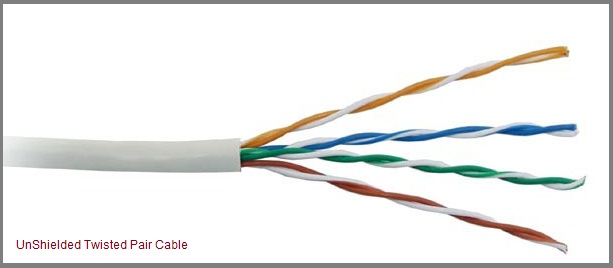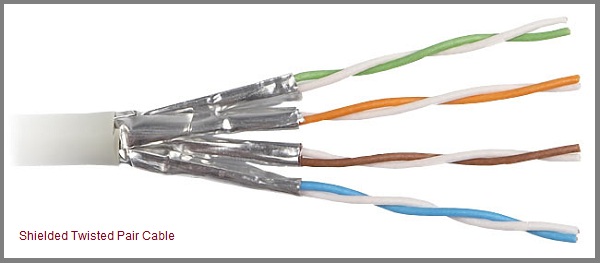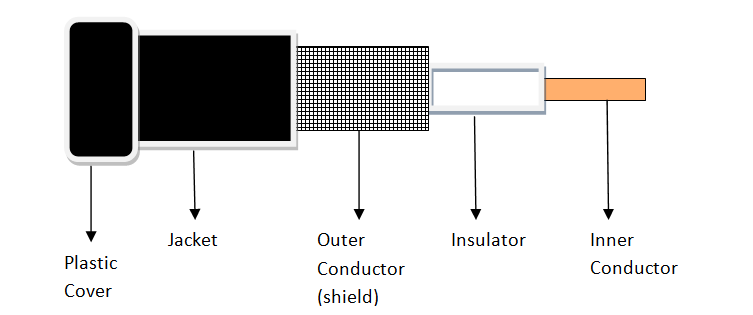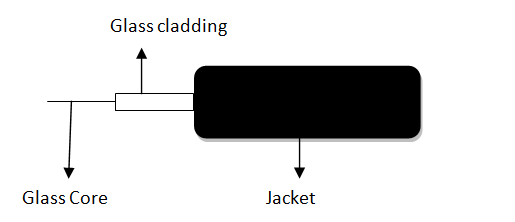Fibre-optic
communication is a method of transmitting information from one place to another
by sending pulses of light through an optical fibre. The light forms an
electromagnetic carrier wave that is modulated to carry information. First
developed in the 1970s, fibre-optic communication systems have revolutionized
the telecommunications industry and have played a major role in the advent of
the Information Age. Because of its advantages over electrical transmission,
optical fibres have largely replaced copper wire communications in core
networks in the developed world. Optical fibre is used by many
telecommunications companies to transmit telephone signals, Internet
communication, and cable television signals. Researchers at Bell Labs have
reached internet speeds of over 100 petabit×kilometer per second using fibre-optic
communication.
The
process of communicating using fibre-optics involves the following basic steps:
Creating the optical signal involving the use of a transmitter, relaying the
signal along the fibre, ensuring that the signal does not become too distorted
or weak, receiving the optical signal, and converting it into an electrical
signal.
Modern
fibre-optic communication systems generally include an optical transmitter to
convert an electrical signal into an optical signal to send into the optical fibre,
a cable containing bundles of multiple optical fibres that is routed through
underground conduits and buildings, multiple kinds of amplifiers, and an
optical receiver to recover the signal as an electrical signal. The information
transmitted is typically digital information generated by computers, telephone
systems, and cable television companies.
Transmitter:
The
most commonly used optical transmitters are semiconductor devices such as
light-emitting diodes (LEDs) and laser diodes. The difference between LEDs and
laser diodes is that LEDs produce incoherent light, while laser diodes produce
coherent light. For use in optical communications, semiconductor optical
transmitters must be designed to be compact, efficient, and reliable, while
operating in an optimal wavelength range, and directly modulated at high
frequencies.
In
its simplest form, a LED is a forward-biased p-n junction, emitting light
through spontaneous emission, a phenomenon referred to as electroluminescence.
The emitted light is incoherent with a relatively wide spectral width of 30-60
nm. LED light transmission is also inefficient, with only about 1% of input power, or about 100 microwatts, eventually converted into
launched power which has been coupled into the optical fibre. However, due to
their relatively simple design, LEDs are very useful for low-cost applications.
Today,
LEDs have been largely superseded by VCSEL (Vertical Cavity Surface Emitting
Laser) devices, which offer improved speed, power and spectral properties, at a
similar cost. Common VCSEL devices couple well to multi-mode fibre.
A
semiconductor laser emits light through stimulated emission rather than
spontaneous emission, which results in high output power (~100 mW) as well as
other benefits related to the nature of coherent light. The output of a laser
is relatively directional, allowing high coupling efficiency (~50 %) into
single-mode fibre. The narrow spectral width also allows for high bit rates
since it reduces the effect of chromatic dispersion. Furthermore, semiconductor
lasers can be modulated directly at high frequencies because of short
recombination time.
A GBIC module (shown here with its cover removed), is an optical and electrical transceiver. The electrical connector is at top right, and the optical connectors are at bottom left.
Receivers:
The
main component of an optical receiver is a photodetector, which converts light
into electricity using the photoelectric effect. The primary photodetectors for
telecommunications are made from Indium gallium arsenide the photodetector is
typically a semiconductor-based photodiode. Several types of photodiodes
include p-n photodiodes, p-i-n photodiodes, and avalanche photodiodes.
Metal-semiconductor-metal (MSM) photodetectors are also used due to their
suitability for circuit integration in regenerators and wavelength-division
multiplexers.
Optical-electrical
converters are typically coupled with a Trans impedance amplifier and a
limiting amplifier to produce a digital signal in the electrical domain from
the incoming optical signal, which may be attenuated and distorted while
passing through the channel. Further signal processing such as clock recovery
from data (CDR) performed by a phase-locked loop may also be applied before the
data is passed on.
Fibre cable types:
An
optical fibre cable consists of a core, cladding, and a buffer (a protective
outer coating), in which the cladding guides the light along the core by using
the method of total internal reflection. The core and the cladding (which has a
lower-refractive-index) are usually made of high-quality silica glass, although
they can both be made of plastic as well. Connecting two optical fibres is done
by fusion splicing or mechanical splicing and requires special skills and
interconnection technology due to the microscopic precision required to align
the fibre cores.
Two
main types of optical fibre used in optic communications include multi-mode
optical fibres and single-mode optical fibres. A multi-mode optical fibre has a
larger core (≥ 50 micrometres), allowing less precise, cheaper transmitters and
receivers to connect to it as well as cheaper connectors. However, a multi-mode
fibre introduces multi-mode distortion, which often limits the bandwidth and
length of the link. Furthermore, because of its higher dopant content,
multi-mode fibres are usually expensive and exhibit higher attenuation. The
core of a single-mode fibre is smaller (<10 micrometres) and requires more
expensive components and interconnection methods, but allows much longer,
higher-performance links.
In
order to package fibre into a commercially viable product, it typically is
protectively coated by using ultraviolet (UV), light-cured acrylate polymers,
then terminated with optical fibre connectors, and finally assembled into a
cable. After that, it can be laid in the ground and then run through the walls
of a building and deployed aerially in a manner similar to copper cables. These
fibres require less maintenance than common twisted pair wires, once they are
deployed.
Specialized
cables are used for long distance sub-sea data transmission, e.g. transatlantic
communications cable. 2011–2013 cables operated by commercial enterprises
typically have four strands of fibre and cross the Atlantic in 60-70 ms. Cost of
each such cable was about $300M in 2011.
Another
common practice is to bundle many fibre optic strands within long-distance
power transmission cable. This exploits power transmission rights of way
effectively, ensures a power company can own and control the fibre required to
monitor its own devices and lines, is effectively immune to tampering, and
simplifies the deployment of smart grid technology.
Multi-mode optical fibre
in an underground service pit.
Amplifier:
The
transmission distance of a fibre-optic communication system has traditionally
been limited by fibre attenuation and by fibre distortion. By using
opto-electronic repeaters, these problems have been eliminated. These repeaters
convert the signal into an electrical signal, and then use a transmitter to
send the signal again at a higher intensity than was received, thus
counteracting the loss incurred in the previous segment. Because of the high
complexity with modern wavelength-division multiplexed signals (including the
fact that they had to be installed about once every 20 km), the cost of these
repeaters is very high.
An
alternative approach is to use an optical amplifier, which amplifies the
optical signal directly without having to convert the signal into the
electrical domain. It is made by doping a length of fibre with the rare-earth
mineral erbium, and pumping it with light from a laser with a shorter
wavelength than the communications signal (typically 980 nm). Amplifiers have
largely replaced repeaters in new installations.
Wavelength-division multiplexing:
Wavelength-division
multiplexing (WDM) is the practice of multiplying the available capacity of
optical fibres through use of parallel channels, each channel on a dedicated
wavelength of light. This requires a wavelength division multiplexer in the
transmitting equipment and a de-multiplexer (essentially a spectrometer) in the
receiving equipment. Arrayed wave-guide gratings are commonly used for multiplexing and de-multiplexing in WDM. Using WDM technology now commercially
available, the bandwidth of a fibre can be divided into as many as 160 channels
to support a combined bit rate in the range of 1.6 Tbit/s.






